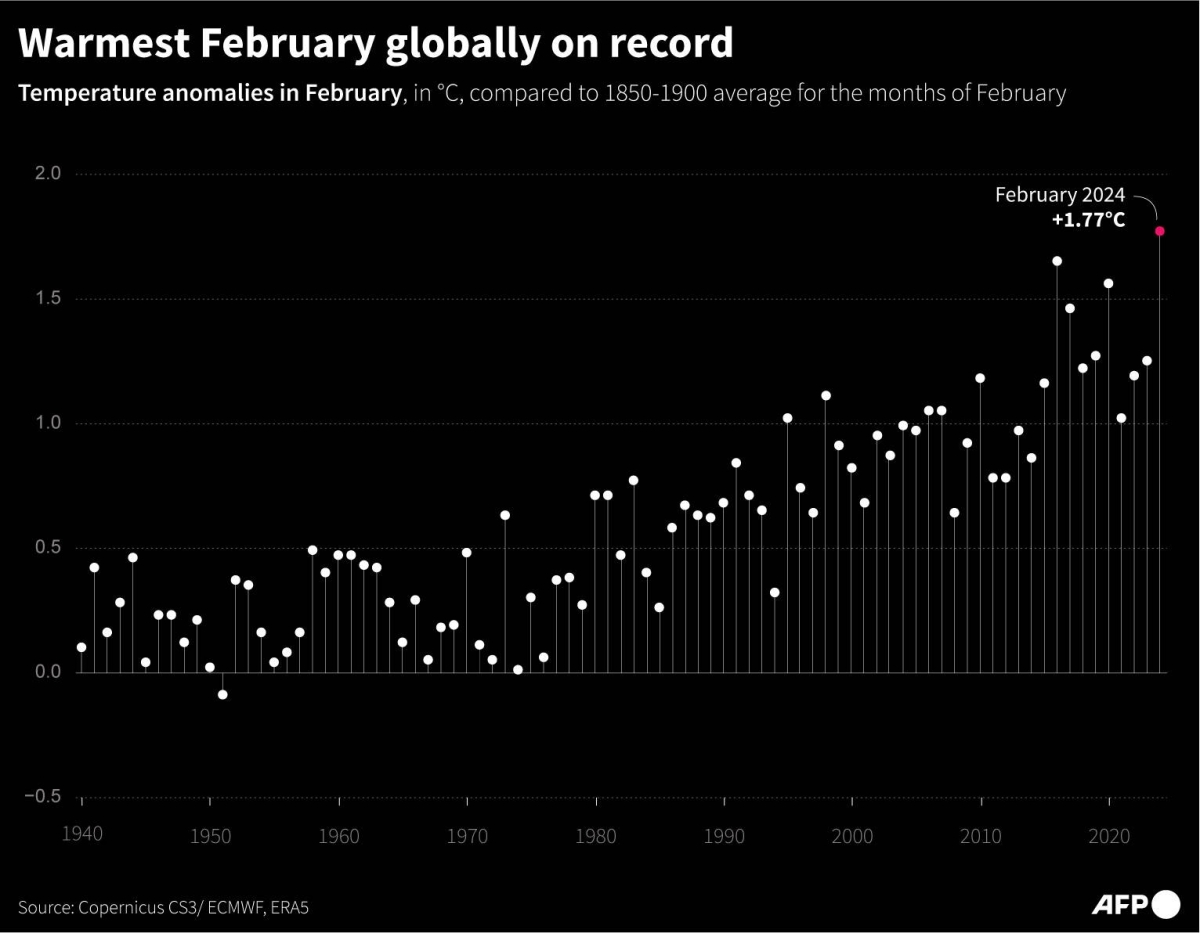Months of record-breaking temperatures and the El Niño weather phenomenon have contributed to a new peak in the heating of the world’s oceans, according to scientists. Oceans cover 70 percent of the planet and have played a crucial role in maintaining the livability of Earth’s surface. They have absorbed 90 percent of the excess heat produced by carbon pollution from human activity since the industrial age began.
The trend of progressively hotter oceans has been observed for the past decade. However, last year scientists noted that the temperatures were “off the charts” due to the combined effects of human-caused climate change and the short-term warming impacts of El Niño. This trend has continued into 2024, with February recording the highest average sea surface temperatures on record, reaching 21.06 degrees Celsius, as reported by the Copernicus Climate Change Service (C3S).
Notably, February 2024 was also the hottest February globally on record, marking the ninth consecutive month of historic high temperatures, according to C3S. Carlo Buontempo, director of C3S, emphasized that considering historical temperatures, “our civilization has never had to cope with this climate.” The remarkable heat levels in the upper oceans highlight the extent to which they have absorbed the extra energy and carbon emitted into the climate system through human activities.
The impact of rising ocean temperatures extends beyond climate patterns. Warmer oceans lead to increased moisture in the atmosphere, resulting in more erratic weather conditions such as fierce winds and heavy rainfall. Marine life, including coral reefs and migratory species like humpback whales, is also affected by these changes.
While El Niño has contributed to the intensification of global warming and hotter sea surface temperatures, World Meteorological Organization chief Celeste Saulo emphasized that it is not the sole explanation. Sea surface temperatures in various parts of the world have persistently and unusually remained high for the past ten months, indicating a broader climate change issue.
According to Copernicus, global temperatures in 2023 were likely the hottest in over 100,000 years. The period from February 2023 to January 2024 marked the first time Earth experienced 12 consecutive months with temperatures 1.5 degrees Celsius hotter than the pre-industrial era. February 2024 continued this record-breaking streak, averaging 1.77 degrees Celsius warmer than the monthly estimate for 1850-1900, which serves as the pre-industrial benchmark.
Despite these alarming trends, it is important to note that the current ocean temperatures do not breach the 2015 Paris climate deal limit of “well below” 2 degrees Celsius, preferably 1.5 degrees Celsius, which is measured over decades. Additionally, there may be some respite on the horizon. The return of the cooling La Niña weather phenomenon in 2024 could potentially decrease the risk of surpassing last year’s record heat. Europe’s climate monitor suggests that El Niño peaked in December 2023 and a transition back to neutral conditions is expected by the end of the Northern Hemisphere’s spring, followed by a shift to La Niña over the summer.
In conclusion, the rising temperatures of the world’s oceans are a significant concern, driven by the combined effects of climate change and natural weather phenomena. The impact of these rising temperatures extends beyond climate patterns and affects marine life as well. It is crucial for global efforts to address climate change and reduce carbon emissions to prevent further escalation of this issue.
Source: The Manila Times








